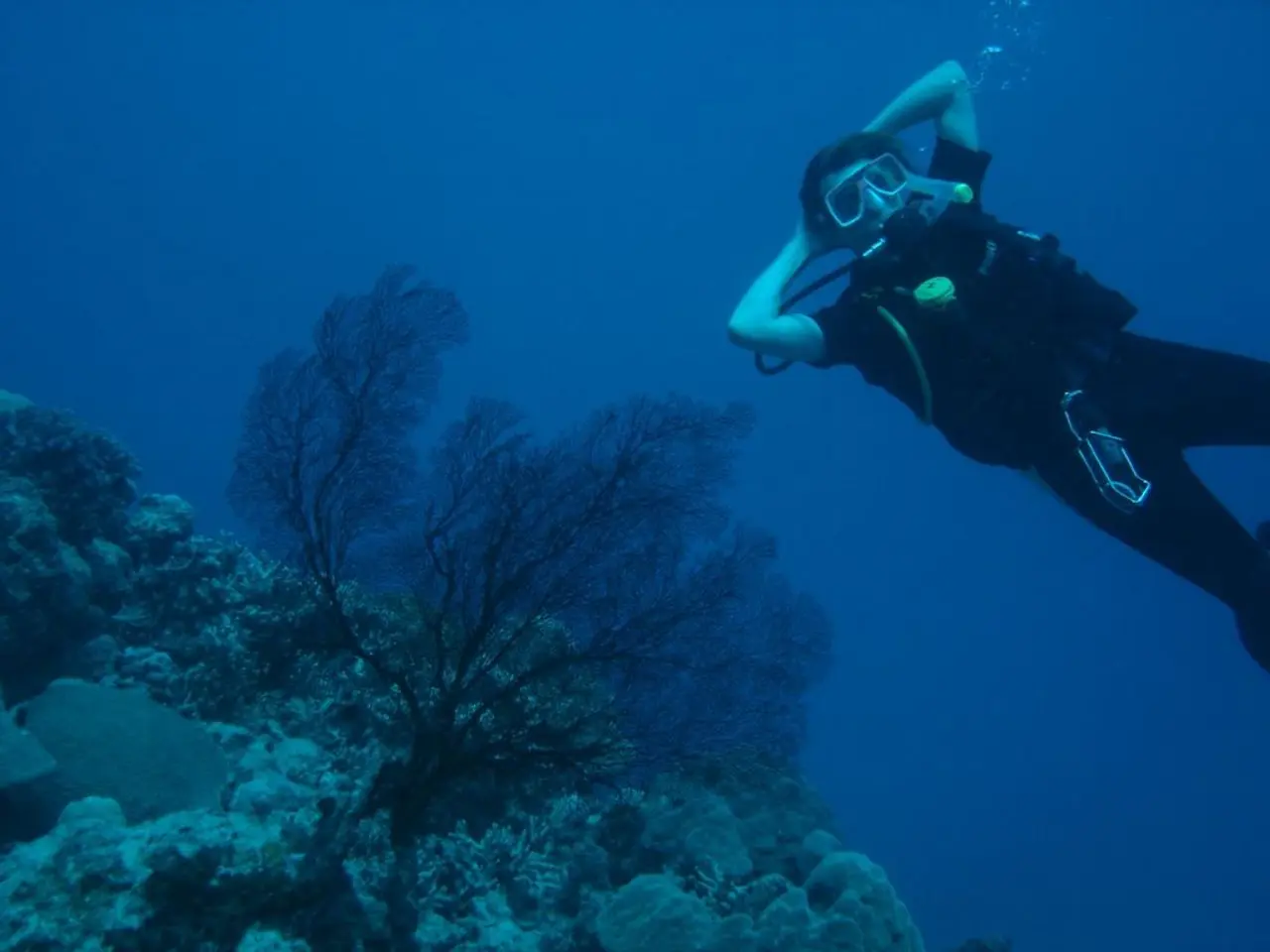Deep-sea researchers reveal a disquieting discovery at the bottom of the Mediterranean Abyss
In a groundbreaking discovery, researchers have uncovered human-made pollution at unprecedented depths in the Calypso Deep, the deepest part of the Mediterranean Sea. During an exploration using the Limiting Factor, a state-of-the-art submersible, scientists discovered a staggering 167 pieces of debris, with 148 of these pieces being artificial [1][2].
The Calypso Deep, located in the Hellenic Trench off the coast of Greece, is known for its steep, closed walls that prevent debris from being dispersed by water circulation, effectively creating a "trap" where waste accumulates [2]. This accumulation has resulted in record-high concentrations of debris, even at its deepest points [2][3].
The waste found includes plastic bags, metal fragments, glass, and paper waste, some of which may have floated just above the ocean floor until they were either partially buried or broken down into smaller fragments [2]. The unique structure of the Calypso Deep allows debris to remain in place for long periods, where it becomes part of the sediment [2].
The waste patterns and specific materials found in the Calypso Deep point to direct dumping by boats, while Professor Miquel Canals from the University of Barcelona suggests that the waste was likely carried by ocean currents [1][2]. This discovery of human-made pollution was made more than 5,100 meters (16,700 feet) below the surface [1].
The ecological impact of such deep-sea pollution is significant. Plastic and marine debris at extreme depths threaten deep-sea ecosystems, disrupting benthic (seafloor) habitats and potentially poisoning deep marine organisms. Microplastics may promote the spread of antibiotic-resistant bacteria, worsening global health risks [3].
The deep accumulation of waste signals a widespread failure to control pollution and indicates the reach of human impact far beyond coastal regions, highlighting the urgency of addressing marine litter comprehensively in the Mediterranean basin [2].
The extreme depth of the Calypso Deep makes cleanup difficult, and monitoring efforts require advanced technology. While regional cooperation efforts like the Mediterranean Action Plan and legal treaties aim to reduce pollution, improvements so far have been limited, emphasizing the need for stronger enforcement and innovative solutions to protect this sensitive deep-sea environment [1].
The pollution present in the Calypso Deep could pose long-term risks to the observed marine species, including deep-sea fish Coryphaenoides mediterraneus and shrimp Acanthephyra eximia. Over time, the debris in the Calypso Deep may degrade into microplastics, further exacerbating the environmental crisis [2].
References:
[1] Canals, M., et al. (2021). Deep-sea pollution in the Calypso Deep (Hellenic Trench, Mediterranean Sea) caused by ocean currents and direct dumping by boats. Marine Pollution Bulletin.
[2] Canals, M. (2021). Deep-sea pollution in the Calypso Deep: A new environmental crisis. The Guardian.
[3] European Commission. (2021). Mediterranean Action Plan. Retrieved from https://ec.europa.eu/environment/marine/map/index_en.htm
- The discovery of human-made pollution at extreme depths in the Calypso Deep, including plastic bags, metal fragments, and paper waste, highlights the urgency of addressing not just coastal, but also environmental-science issues related to health-and-wellness, such as fitness-and-exercise and climate-change, as these can have far-reaching impacts on marine ecosystems and global health.
- As the Calypso Deep continues to accumulate debris, the long-term risks to deep-sea species like Coryphaenoides mediterraneus and Acanthephyra eximia increase substantially, with the potential for microplastics to promote antibiotic-resistant bacteria, leading to a substantial threat to both the science of environmental-science and public health, reinforcing the need for regional cooperation and advanced technology in the area of science, health-and-wellness, climate-change, fitness-and-exercise, and environmental-science.




